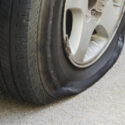
Every once in a while you experience a tire that seems to keep losing air. And you’re not exactly sure why, but it’s bothersome. Whenever you notice a dashboard light indicating a tire issue, you think, “Oh, I’ve got to deal with that.”
Reasons for Low Pressure Tires
Maybe you’ve got a tire experiencing a slow leak. You take the vehicle to a mechanic and he or she tries to figure out what’s wrong. Perhaps they dip the tire in water and look for bubbles to find out where the leak is. Or maybe they adjust the seal where the tire attaches to the wheel, which could be letting air escape. There could also be a hole in the tread (from a nail in the road) or maybe a hole in the sidewall, thanks to something sharp hitting it while on the road. Then again, maybe the mechanic discovers you’ve got a loose or improperly functioning tire valve. Or a repair that was previously done to the tire is no longer working well. As you can see, there are a lot of different reasons you might have a tire that’s losing air.
Oftentimes, mechanics and do-it-yourselfers will use soapy water spread over and around a tire. Why do they do this? Well, if they notice bubbles, that’s the spot where air is leaking from, and then they can address the problem. Keep in mind that leaks can be tiny– the size of a pinhole! So you might not even notice a leak with the naked eye. Also, the leak might not be leaking as much when the vehicle is sitting idle, but then, when it’s driving on the road, the tire heats up and pressure is put on that hole/leak so it widens and lets out air.
One of the reasons you might be losing air is that the tire isn’t set perfectly against the wheel. When this happens, sand, grit or dirt can work its way into this space, creating an opening that lets air out.
It’s annoying when a tire is slowly losing air. That said, a mechanic can usually diagnose the problem and fix it.
If you’re looking for a reliable used vehicle, check out the inventory at 443 Auto Sales.
